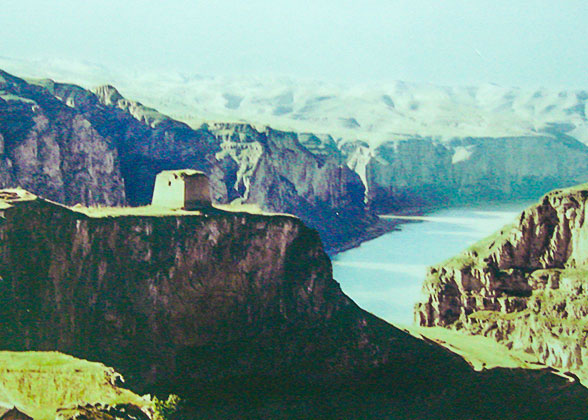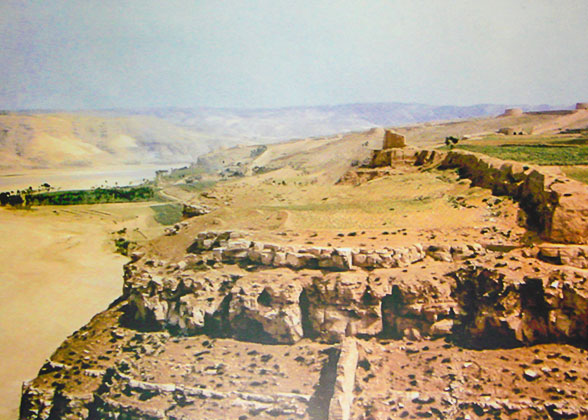After saying good-bye to Yalu River in Liaoning Province, the Great Wall snakes up and down the mountain ridges, and finally arrives at the bank of the Yellow River. Here at Pianguan, you can enjoy the great construction and the intoxicating natural masterpiece at the same place. Hence, it has become an ideal location for photographers.
Pianguan Pass
The Pianguan Pass is one of the three outer passes of the Great Wall; the others being
Ningwu Pass and
Yanmen Pass. It joins the Yajiao Mountain in the east, and meets the Yellow River in the west. It is also called Piantouguan Pass, which literally means a pass leaning to one side. The pass was so named because the terrain is high in the east, and low in the west.
The pass was constructed in 1390 during the
Ming Dynasty (1368-1644) and repaired and extended several times thereafter. Its wall had a girth of 1.6 miles (2.5 kilometers), and a height of 38 feet (11.7 meters). There were three gates in total at one time, namely, the East Gate, West Gate, and South Gate. Solid barbicans were built outside these gates. Troops were stations inside the pass during wartime. There were wide streets, temples, and ancient folk houses inside the pass.
The pass also served as an essential commercial center during the Ming Dynasty. When the war ended and the trade barrier was broken down, the northern Mongolian people came to trade on their horse back for the silk and tea made by the local Han people. Although it was a prosperous trading post then, time was not on its side and thus was gradually demolished from 1940s onwards. Today, one can only see the south arched gate and the dilapidated brick wall to the west of the pass.
Old Ox River Bend- Where the Great Wall Meets the Yellow River
 |
| Old Ox River Bend |
The Old Ox River Bend (Laoniuwan) is the spot where the Great Wall shakes hands with the Yellow River like two friends. Legend has it that the riverbed was ploughed by an Old Ox. When it passes this place, the ox was shocked by a twinkling ray of light, and thus turned back suddenly, forming the intoxicating river bend. One can see the winding wall sitting quietly by the rippling Yellow River. The magnificent human creation is in perfect harmony with the river. In addition, there is a well-preserved hollow brick tower standing on the cliff and looking out onto the Yellow River. The tower is called Wanghe Tower, literally meaning Watching River Tower in English, a famous sight along the Pianguan Great Wall.
Quadruple-row Great Wall
There are four rows of the Great Wall near the Pianguan Pass. The First Row is 37 miles (60 kilometers) away from the pass, running from Yatou Pier in the east to the Yellow River in the west. It is made of fences, with a length of 93 miles (150 kilometers). The Second Row, 19 miles (30 kilometers) from the pass, is an essential part of the outer Great Wall which runs from Yajiao Pier to the Old Ox River Bend by the Yellow River. The Third Row is about 9 miles (15 kilometers) northeast of the pass, and has a length of 28 miles (45 kilometers). It connects Laoying Fort in the east and the Baidao Slope in the west. The Fourth Row is 0.6 mile (1 kilometer) south of the pass. You can see the relics of this line near Hualin Fort along the Yellow River. It is composed of bricks and has a length of 19 miles (30 kilometers). The quadruple-row wall made a sound military defense system.
How to Get There
It is located in Pianguan County, Xinzhou, Shanxi Province. However, it is more easily accessible from Shuozhou. First, take a train or a long-distance bus to Shuozhou. Then, take a coach to Pianguan County from Shuozhou Bus Station to the opposite of the railway station. The trip takes about 2 hours. Afterwards, charter a car to the place. It costs around CNY 150-200 for a round trip.
- Last updated on Feb. 29, 2024 by Brenda Lian -

